Դասակարգել հոդվածները ըստ:  Ամսաթիվ
Ամսաթիվ 
 Վերնագիր
Վերնագիր 
 Հեղինակ
Հեղինակ 
Պատմություն4
COLIN RENFREW’S STATE-FORMATION CONCEPTS AND THE POLITICAL FORMATIONS OF THE ARMENIAN HIGHLAND IN THE 2nd MILLENNIUM BCE
By: Mariam Khanzadyan Researcher, Institute of Oriental Studies of the NAS of the RA mar.khanzadyan@gmail.com
The British archaeologist and historian Colin Renfrew, in the late 20th century, proposed the concepts of “multiplier effect” and “peer polity interaction” to understand the mechanisms of early state formation. He believed that close interaction among peer polities could act as a catalyst for the establishment of states, citing the formation of Greek poleis as an example. We propose applying this theory as a working hypothesis to the political formations of the Armenian Highland in the 2nd millennium BCE, specifically concerning the western and northeastern parts of the Armenian Highland. These areas were divided among numerous small polities of almost equal influence, whose competition and interaction could have had a positive impact on the subsequent emergence of more organized polities in those regions, such as Išuwa and the Etiuni confederation.
 Ներբեռնել
Ներբեռնելpdf (0.84 MB)
GENERAL VLADIMIR POLTAVTSEV’S UNPUBLISHED MEMOIRS ABOUT THE PARTICIPATION OF ARMENIANS IN THE CAUCASIAN CAMPAIGN OF WORLD WAR I
By: Ruben Sahakyan Doctor in History, Senior Researcher at the Institute of History, National Academy of Sciences of the Republic of Armenia, rubensahakyan58@gmail.com
Significant studies, articles, memoirs, and collections of documents and materials have been written about Armenians, particularly Armenian volunteer detachments, on the Caucasian or Russian-Turkish front of the First World War. Among these is the unpublished memoir of Vladimir Nikolayevich Poltavtsev (June 4, 1875 – January 19, 1937), a general of the Russian army, a participant in the White movement, and an émigré major general. Poltavtsev graduated from the Kiev Infantry Junker School (1897) and the Nikolaev Academy of the General Staff (1904). During the Russo-Japanese War, he was in the active army but did not participate in combat operations. He participated in the First World War and the White movement. In 1917, he was promoted to the rank of major general. On the eve of the First World War, on October 11, 1913 , and at the beginning, he held the positions of Chief of Staff of the Azerbaijan (Atropatene) detachment stationed in Northern Persia and the Caucasian 2nd Rifle Brigade within it, then the division (1913-1916), and other positions, and was awarded the Order of St. George with Weapons and other decorations . During the trial of Lieutenant General N. A. Marx , he was a member of the field military court (1919), and then emigrated to Yugoslavia, Belgrade , where he was a member of the editorial board of the newspaper “Русский голос” (“Russian Voice”).
Poltavtsev’s unpublished manuscripts are preserved in the archive of the former Quartermaster General of the Caucasian Army, Major General E. V. Maslovsky (1876-1971), which is located in the B. A. Bakhmetev Archive at Columbia University in the USA and in the State Archives of the Russian Federation.
- Հանգուցային բառեր:
- General Poltavtsev
- World War I
- Caucasian campaign
- General Nazarbekyan
 Ներբեռնել
Ներբեռնելpdf (6.65 MB)
ON THE INTERNAL POLITICAL DEVELOPMENTS OF CILICIAN ARMENIA IN THE 1320s
By: Aram Hovhannisyan PhD in History, Associate Professor, Yerevan State University, aramhovhannisyan525@gmail.com
The work is dedicated to one of the most complex and difficult periods in the history of Cilician Armenia – the 1320s. This was a time when the Mongols were no longer allies, and the Armenian kingdom was fighting alone against the surrounding Muslim states. Drawing upon information provided by medieval primary sources, as well as considering the viewpoints present in modern scholarly literature, the author attempts to present the internal political events and the details of the power struggle in Cilician Armenia during this crucial period. Particular attention is paid to the murder of the regents by the Armenian king in Adana on January 27, 1329, the details of the event, and the individuals involved. The author seeks to substantiate all the reasons that led to this brutal crime, after which Levon IV began to rule the Cilician Armenian kingdom single-handedly.
 Ներբեռնել
Ներբեռնելpdf (0.79 MB)
THE REFUGEE ISSUE IN THE SUPREME COUNCIL OF THE REPUBLIC OF ARMENIA IN THE CONTEXT OF STATE BUILDING IN 1990-1991
By: Lilit Zakaryan PhD in History, Associate Professor, Institute of History of the NAS RA, lilitzakaryan66@gmail.com
In July 1990, the newly elected Supreme Council of the Armenian SSR began state building by adopting the Declaration of Independence. In the context of the enormous problems of state-building, the Karabakh issue was sometimes relegated to the background. However, the intensification of the policy of persecution of Armenians in Azerbaijan, new manifestations of the mass deportation of Armenians with the consent and participation of the power structures of the agonizing Soviet empire forced the Supreme Council to bring it back to the agenda. The article deals with the discussion of the issues of mass deportation of Armenians in the Supreme Council of the Republic of Armenia and the forced change of the policy vector in the context of state-building.
- Հանգուցային բառեր:
- Mass displacement
- refugees
- deportation
- Supreme Council
- state-building
 Ներբեռնել
Ներբեռնելpdf (0.92 MB)
Քաղաքական գիտություններ1
PRINCIPLES OF PARLIAMENTARISM IN THE CONTEXT OF WESTERN ARMENIAN CONSTITUTIONAL CULTURE
By: Lilit Sarvazyan PhD, Associate Professor at the Yerevan State Pedagogical University Head of the Department of Theory and History of Philosophy, Institute of Philosophy, Sociology and Law, NAS RA lilit.sarvazyan@gmail.com
The Western Armenian constitutional movement, as a unique attempt in the East to modernize the national administrative system based on parliamentary principles, has been interpreted by many Armenian and foreign thinkers. In the context of the historical and political realities of the 19th-century Ottoman Empire, foreign authors tried to understand the level of the Armenian nation’s constitutional and legal consciousness, its capacity for self-government, the degree of its assimilation of European culture, and the essence of its system of governance. Within national circles, Western Armenian constitutionalism has been studied from various perspectives and with certain considerations, especially with the aim of predicting the nation’s political prospects. The goals and patterns of the constitutional movement, the philosophical and ideological foundations and criteria of the “National Constitution,” and the possibility and outcomes of parliamentary governance in Western Armenia have been revealed.
 Ներբեռնել
Ներբեռնելpdf (0.87 MB)
Կրոն1
PREREQUISITES FOR THE EMERGENCE AND FORMATION OF INDEPENDENT THEOLOGICAL THOUGHT IN THE ARMENIAN CHURCH
By: Fr. Movses (Davit) Sahakyan Gevorgian Theological Seminary, Mother See of Holy Etchmiadzin, Armenia, fr.movses@gmail.com, ORCID: 0009-0003-0282-5719
The Christian faith stands as one of the cornerstones in the formation of Armenian identity, uniquely manifested through Armenian theological thought. Rooted in pivotal ecclesiastical-historical events, this thought has evolved, deepened, and been refined over centuries, creating a rich heritage that reflects both universal Christian traditions and the unique spiritual and cultural character of the Armenian people. This article addresses the early periods of the Armenian Church’s history (from its foundation to the beginning of the 6th century). Its focus of study includes historical events such as the introduction of Christianity to Armenia and its adoption as a state religion, as well as the invention of the Armenian alphabet and its impact on Armenian Christian thought. The article also touches upon the universal and local ecclesiastical challenges of the time, aiming to reveal how the ecclesiastical authors and events of that era shaped and crystallized Armenian Christian theological thought. This thought responded to both internal religious needs and the developments in global Christianity, thereby defining the unique character of Armenian theological thought.
- Հանգուցային բառեր:
- Armenian Church
- Christianity
- St. Gregory the Illuminator
- Nicene Creed
- Mesrop Mashtots
 Ներբեռնել
Ներբեռնելpdf (1.08 MB)
Էկոնոմիկա1
QUALITY AND EFFICIENCY OF ECONOMIC DEVELOPMENT
By: Yuri Suvaryan Division of Armenology and Social Sciences, National Academy of Sciences, Armenia suvaryan@sci.am
Meri Manucharyan Ph.D in Economics, Director of the Institute of Economics named after M. Kotanyan NAS RA Associate Professor, Armenian National Agrarian University, Chair of Agrarian Economics meri.g.manucharyan@gmail.com, mmanucharyan@economics.sci.am
The quality of economic development is expressed by continuous improvement in the spheres of production, consumption and services, which ensures an increase in the quality of life of the population and environmental stability. Quality economic development includes sustainable growth, social justice, technological innovation, and increased access to education and health services. The efficiency of the development is determined by the optimal use of resources, the increase in productivity and the modernization of the structure of the economy. This implies not only an increase in the rate of economic growth, but also an improvement in operational efficiency, competitiveness of organizations and the investment environment.
The research presents the main ideas of the quality and efficiency of economic development, presenting the features of development processes aimed not only at quantitative growth, but also at qualitative improvement.
The article also discusses the structure of the GDP, the structure of RA foreign trade, including the export and import of high-tech products, emphasizing the role of scientific industrial technologies and knowledge as important factors of the quality of economic development.
- Հանգուցային բառեր:
- economic growth
- quality
- efficiency
- GDP
- export
- import
- development
- evaluation
 Ներբեռնել
Ներբեռնելpdf (0.92 MB)
Կրթություն2
INTERSECTION OF CONFLICTING INTERESTS IN THE OTTOMAN BORDERLANDS: THE SANASARIAN SCHOOL OF ERZURUM IN RUSSIAN CONSULAR REPORTS ON THE EVE OF THE GREAT WAR
By: Daniel Gazdik PhD student of Pázmány Péter Catholic University, Budapest, Hungary Visiting Lecturer at ASPU, Hungarian Centre, Yerevan, Armenia email address: danielgazdik@aspu.am
This study examines the Sanasarian School of Erzurum as a contested site in Russian-Ottoman imperial rivalries on the eve of the Great War. Using Russian consular reports, it explores how the school became a focal point of geopolitical struggles, caught between Armenian national aspirations and foreign influences. Founded in 1881, the Sanasarian School was a prestigious Armenian institution, yet Russian authorities viewed it with suspicion, fearing its role in fostering nationalist sentiment and the Armenian Revolutionary Federation influence. The school’s strategic location made it a nexus of competing Russian, Ottoman, and German interests, reflecting broader power struggles in the region. This paper argues that the school was not merely a passive recipient of imperial policies but an active participant in transimperial networks, demonstrating how education shaped identity, political activism, and great-power intervention in the contested Ottoman borderlands.
- Հանգուցային բառեր:
- Sanasarian School
- Erzurum
- consular reports
- education
- Russian Empire
- Ottoman Empire
 Ներբեռնել
Ներբեռնելpdf (0.88 MB)
THE PROBLEM OF ENHANCING THE ROLE OF THE TEACHER IN MODERN ARMENIAN SOCIETY
By: Nelli Minasyan Associate Professor at the Chair of World History and its Teaching Methods, Khachatur Abovyan Armenian State Pedagogical University, PhD in Pedagogy, minasyan.nelli@yahoo.com
Srbuhi Smbatyan Teacher of History and Social Studies at M. Abeghyan Senior School of NUACA
Developments in the 21st century demand new approaches in the field of education, at the center of which is the teacher. The model of the teacher-pedagogue, where the teacher was a transmitter of knowledge, has currently exhausted itself. On the other hand, the master teacher model is developing in the world, which primarily implies the formation of abilities and skills in students, which in turn will allow them to acquire knowledge independently. The adoption of this model will, on the one hand, ensure the effectiveness of educational reforms, and on the other hand, will raise the role of the teacher in Armenian society.
- Հանգուցային բառեր:
- teacher-pedagogue
- master teacher
- licensed teacher
- educational reforms
- students
- abilities and skills
 Ներբեռնել
Ներբեռնելpdf (0.84 MB)
Գրախոսություններ4
Mher A. Harutyunyan, MILITARY CONSTRUCTION IN ARTSAKH (1991–2006), reviewed by Hayk Nazaryan
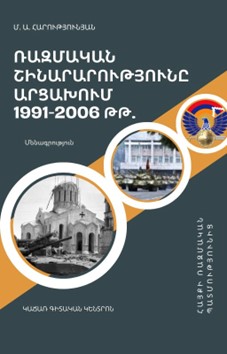
By: Hayk Nazaryan Senior researcher of the Department of the Political Research of the Institute of Philosophy, Sociology and Law of NAS RA, nazaryanhayk8@gmail.com
The monograph written by Mher Harutyunyan, PhD in History, Associate Professor, and Researcher at the Department of Modern History of the Institute of History of the National Academy of Sciences of the Republic of Armenia, presents a theoretical, methodological, and epistemological analysis of key issues in military construction in Artsakh between 1991 and 2006, a subject that has not previously been the focus of comprehensive academic research.
 Ներբեռնել
Ներբեռնելpdf (0.91 MB)
Andrey Maksimchik, Oksana Solopova, Ekaterina Roeva-Mkrtchyan, ADMIRAL ISAKOV, reviewed by Suren Sargsyan
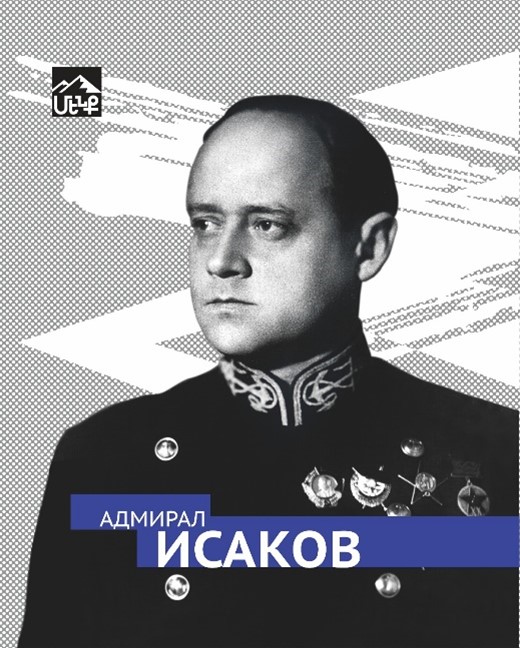
By: Suren T. Sargsyan Doctor of Historical Sciences, Professor
The world changes and renews every day. However, there are values that remain enduring and irreplaceable in this constantly changing and renewing world. In these difficult days for us, national consolidation and unity are extremely important. To be able to face the challenges presented to us, the proper and Armenian upbringing of the younger generation becomes absolutely necessary. For this nation-benefiting work, a renewed and thorough appreciation of national values and our prominent figures is crucial. One such figure was Admiral Hovhannes Isakov of the USSR, whose life and glorious path offer many valuable lessons.
 Ներբեռնել
Ներբեռնելpdf (0.90 MB)
Artsrun Hovhannisyan, THE COMPLEX/MULTILAYERED WARFARE: SUMMARY OF SIXTH-GENE-RATION WARFARE, reviewed by Ruslan Tsakanyan
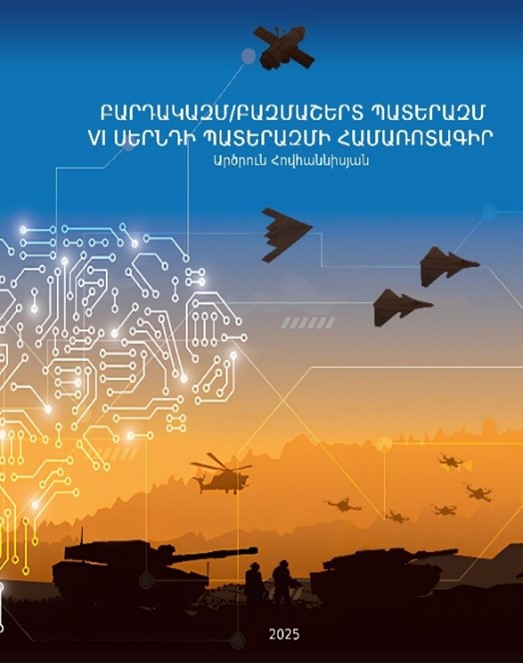
By: Ruslan Tsakanyan
By decision of the Academic Council of Vazgen Sargsyan Military Academy of the Ministry of Defense of the Republic of Armenia, a quite remarkable and unique work (both in military science and military strategy theory) by Artsrun Hovhannisyan, Colonel, PhD, Associate Professor, Head of the Commander and Staff Institute named after Marshal Baghramyan of the same academy, has been published: “The Complex/Multilayered Warfare: Summary of Sixth-Generation Warfare.” This and previous works by the author are unique examples for the Armenian-speaking audience (particularly for high-ranking officers, specialists in military science theory, and military art history) for understanding modern wars and strategic concepts.
 Ներբեռնել
Ներբեռնելpdf (0.84 MB)
Vanik Virabyan, ARMENIA AND THE MILITARY-POLITICAL REPRESENTATIONS OF EUROPEAN COUNTRIES IN TRANSCAUCASIA, 1917-1920, reviewed by Avetis H. Harutyunyan
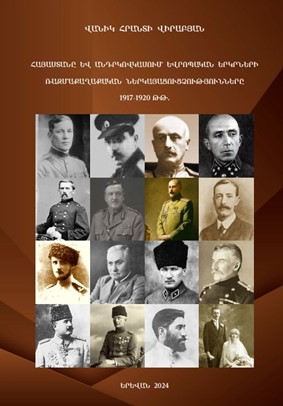
By: Avetis Harutyunyan PhD of History, Professor at the ASPU Chair of Armenian History, avharutunyan@mail.ru
In 2024, the “Vahe Mkrtchyan” publishing house, with the endorsement of the Chair of Armenian History at Kh. Abovyan Armenian State Pedagogical University (ASPU), the Faculty of History and Social Sciences, and the ASPU Scientific Council, published the extensive and valuable monograph “Armenia and the Military-Political Representations of European Countries in Transcaucasia (1917-1920)” by Vanik H. Virabyan, Professor of the Chair of Armenian History at ASPU, Doctor of Historical Sciences. It was printed within the framework of the grant from the State Committee of Higher Education and Science, RA Ministry of Education, Science, Culture and Sport (grant number 217-6A102, “Armenia in the Context of Relations with Military-Political Representations of European Countries in Transcaucasia (1917-1920)”).
 Ներբեռնել
Ներբեռնելpdf (0.88 MB)
Նոր գրքեր12
SYRIAN-ARMENIAN WOMEN MIGRANTS IN ARMENIA. GENDER, IDENTITY, AND PAINFUL BELONGING
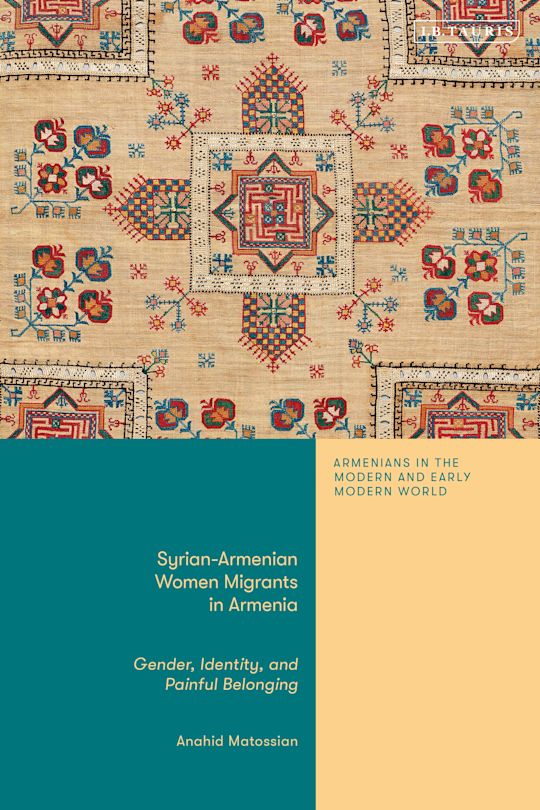
By: Anahid Matossian
I.B. Tauris/Bloomsbury, 2025, 211 pages
After the outbreak of the 2011 Syrian War, a number Syrian-Armenians who had lived there for generations, fled to the Republic of Armenia. This book traces the experiences of Syrian-Armenian women as they navigated their changing and gendered identities from their adopted ‘homeland’ to their socially constructed new ‘ancestral’ home in Armenia. The rich ethnographic research conducted over 6 years by the author reveals how women adjusted to new lives in Armenia, supported themselves through gendered work such as embroidery production, yet mostly challenge simple identities such as ‘refugee’ or ‘repatriate,’ existing in a state of what the author terms “painful belonging”. The book further reveals crucial insight into how experiences and traumatic memories of war in Syria and the Nagorno-Karabakh conflict reciprocally shape each other in the minds of the women interviewed.
THE SCRIPTORIA AND MANUSCRIPT LEGACY OF THE REGION OF GEGHAM
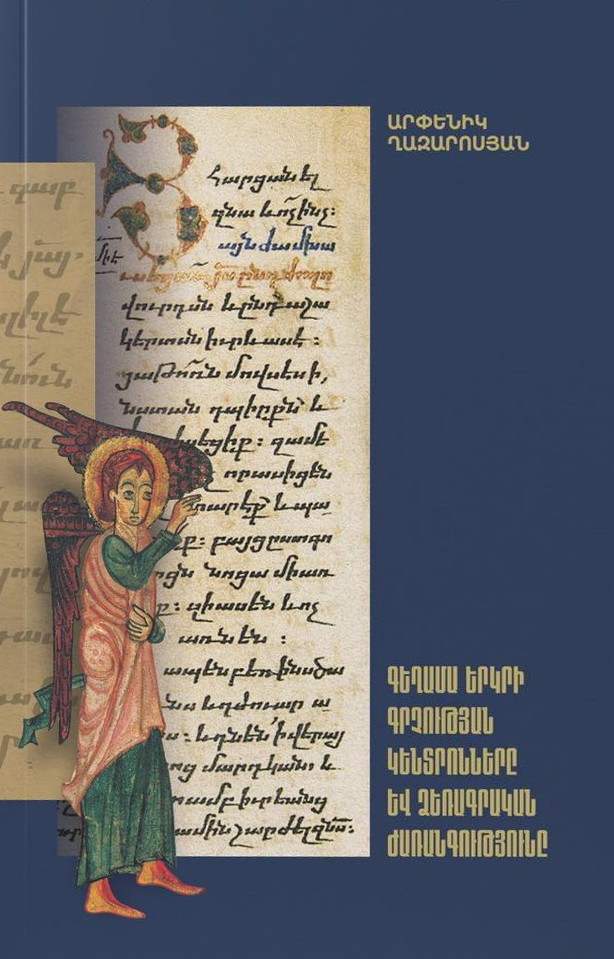
Yerevan, Matenadaran, 2024, 300 p. + 16 p. ill.
The book presents the history of the scriptoria of the Geghama region (Sevan Basin) and its rich manuscript heritage. In the region, Sevanavank played a particularly significant role as a center of scholarly activity and written culture. The book is intended for specialists of Armenian history and culture, as well as for the general public.
A SELECTION OF CARPETS FROM THE ARMENIAN ETHNOGRAPHIC MUSEUM
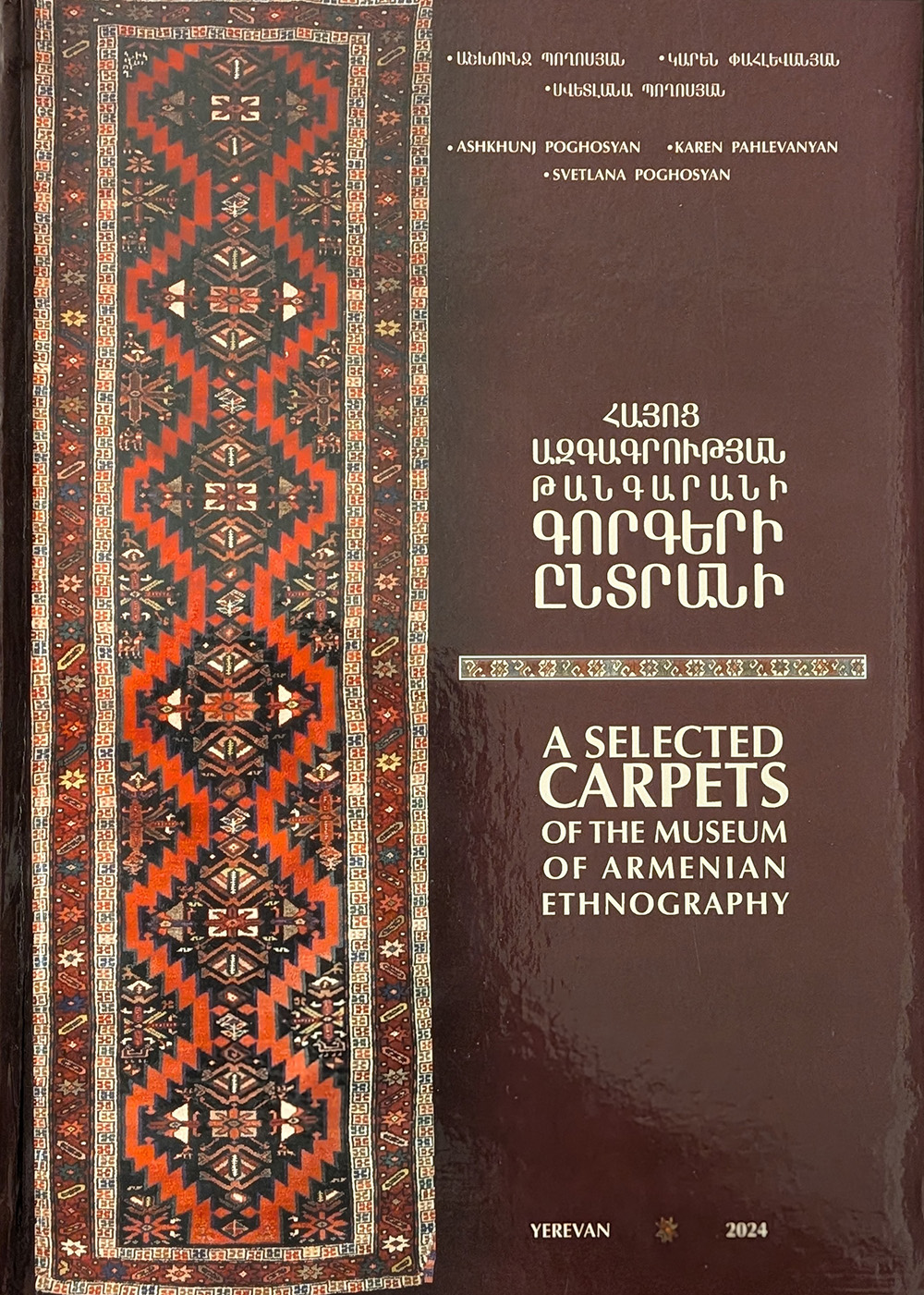
By: Ashkhunj Poghosyan
Karen Pahlevanyan
Svetlana Poghosyan
Yerevan, 2024, 700 p.
The illustrated book, which presents selected carpets from the collection of the Museum of Armenian Ethnography (MAE), will provide an opportunity for specialists in decorative and applied arts, culturologists, ethnographers and people interested in carpet weaving in general to discover an inexhaustible source for the study of Oriental and, in particular. Armenian carpet weaving culture. We think that this work will also clarify some of the confusion that exists in professional circles related to the origin and ethnicity of carpets. In the book, carpets are classified into appropriate groups and subgroups, and their types are named according to our system of typology. The book is written in four languages. The texts are written and translated into three languages by the museum workers. The Turkish version is translated by the “Geghard” Scientific and Analytical Foundation. This work will be a significant contribution to the appreciation of Armenian carpet weaving culture and the proper presentation of Armenian carpets in the system of oriental carpet art.
THE SILENCED CRIME
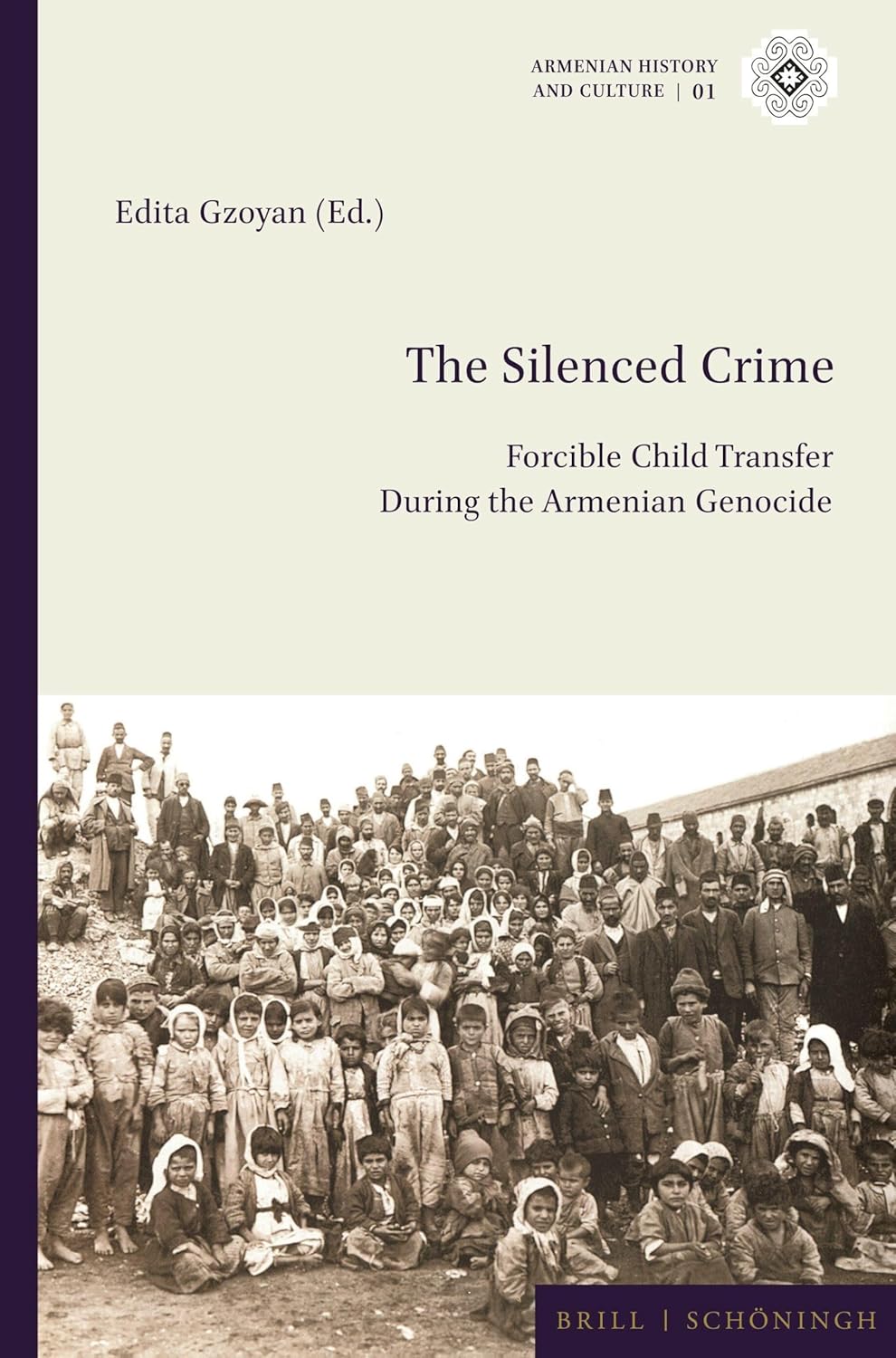
Forcible Child Transfer During the Armenian Genocide
Volume Editor: Edita Gzoyan
Brill, 2025, XVI + 250 p., 40 b/w illustrations and 14 b/w images
The book examines the forcible transfer and assimilation of Armenian children during the Armenian Genocide, a systematic effort by the Young Turk regime to erase Armenian identity through Turkification and conversion to Islam. Targeted as part of a broader genocidal strategy, Armenian children were forcibly removed from their families and placed into Muslim households or state-run orphanages. Through a combination of government decrees and local initiatives, children’s identities were systematically erased via religious conversion and changes to their personal data. This study analyses the legal, ideological, and sociopolitical structures that enabled this policy and explores the complex post-war attempts to recover these children in the aftermath of the Mudros Armistice. Drawing on historical, legal, religious, and sociological perspectives, the book offers a comprehensive analysis of child transfer as a core component of the Armenian Genocide.
WAR AND MEMORY: THE PROBLEM OF MEMORIALIZATION OF THE 44-DAY WAR
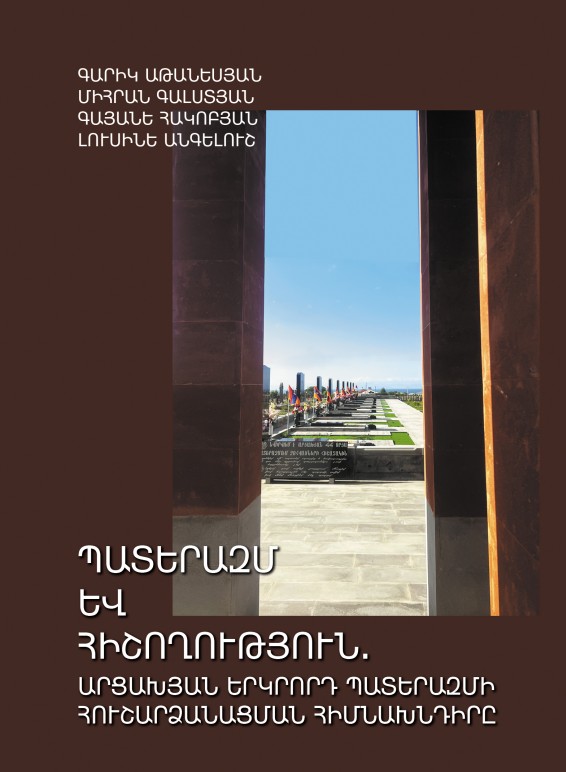
By: Garik Atanesyan
Mihran Galstyan
Gayane Hakobyan
Lusine Angelush
IAE Publication, Yerevan, 2024, 168 p.
This research analyzes the processes of official and public remembrance of the 44-day war, by observing memorialization and commemoration practices initiated by state and other mnemonic actors. The research is based on fieldwork over a three-year period (2022–2024), primarily in the borderland regions of Tavush, Gegharkunik, Vayots dzor, Ararat and Syunik.
The book illustrates official war commemoration practices that are reproducing ceremonial practices of post-Soviet period, while at the same time exposing some unique characteristics of informal commemoration practices formed around individual memorials. Being placed in public areas, war memorials have become an important part of the daily life of the community, around which new customs, community traditions and rituals continue to be formed. The highlight of this research is the study of virtual commemorating practices of the war, which distinguishes the commemoration of the 44-day war from previous Artsakh wars and illustrates new mourning practices, rituals and public perception. Social media platforms have changed the landscape of grief by encouraging mourners to create online shrines and share information about the fallen soldiers, and make their memorials more accessible to the general public.
THE ARMENIAN WOMEN’S MOVEMENT IN THE LATE OTTOMAN EMPIRE. MODERNITY, NATIONALISM AND GENDER
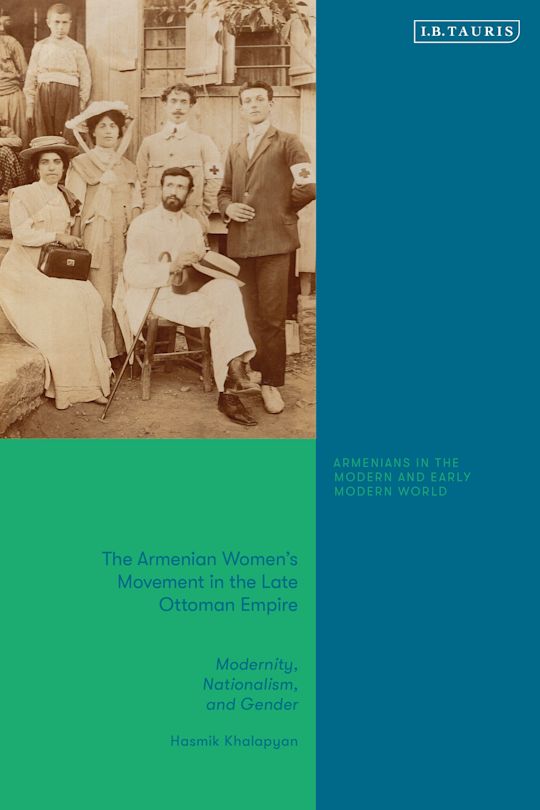
By: Hasmik Khalapyan
I.B. Tauris/Bloomsbury, 2025, 224 p.
The last decades of the Ottoman Empire saw heated debates about and changes to the role of women in society. This book analyses the history of the women’s movement among Ottoman Armenians. Examining debates on the role of women in the Armenian context, Armenian women’s access to education, work and marriage rights, it reveals how women were empowered by nationalist discourses and the wider movement for reform in the empire, and the ways these limited or broadened women’s activism. Drawing from a wide array of archival primary source material, it provides a comprehensive and comparative analysis of changes to the socio-economic, political, cultural status of Ottoman Armenian women from end of the Tanzimat period to the outbreak of World War I.
THE UNITED STATES AND THE ARMENIAN GENOCIDE: HISTORY, MEMORY, POLITICS
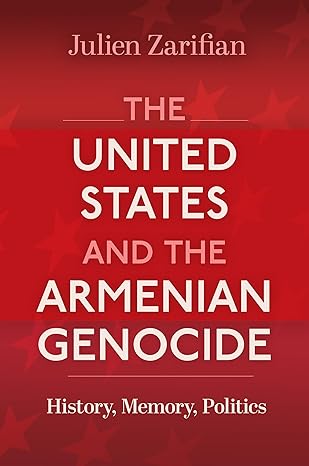
By: Julien Zarifian
Rutgers University Press, 2024, 324 p.
During the first World War, over a million Armenians were killed as Ottoman Turks embarked on a bloody campaign of ethnic cleansing. Scholars have long described these massacres as genocide, one of Hitler’s prime inspirations for the Holocaust, yet the United States did not officially recognize the Armenian Genocide until 2021. This is the first book to examine how and why the United States refused to acknowledge the Armenian Genocide until the early 2020s. Although the American government expressed sympathy towards the plight of the Armenians in the 1910s and 1920s, historian Julien Zarifian explores how, from the 1960s, a set of geopolitical and institutional factors soon led the United States to adopt a policy of genocide non-recognition which it would cling to for over fifty years, through Republican and Democratic administrations alike. He describes the forces on each side of this issue: activists from the US Armenian diaspora and their allies, challenging Cold War statesmen worried about alienating NATO ally Turkey and dealing with a widespread American reluctance to directly confront the horrors of the past. Drawing from congressional records, rare newspapers, and interviews with lobbyists and decision-makers, he reveals how genocide recognition became such a complex, politically sensitive issue.
MEDIA FRAMING AND THE DESTRUCTION OF CULTURAL HERITAGE NEWS NARRATIVES ABOUT ARTSAKH AND GAZA
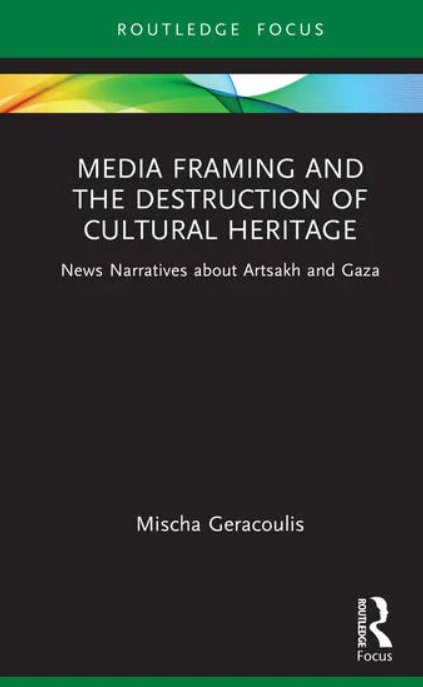
Routledge, 2025, 146 p., 2 B/W Illustrations
Analyzing media coverage in cases where cultural heritage sites have been destroyed during conflict, occupation, and war, this book highlights the important role media play in the preservation of cultural heritage when states or other combatants engage in human rights violations. Author Mischa Geracoulis discusses how the role of journalism and the media during times of conflict is to report information from the front lines and war zones with integrity, and report accurately when states or other combatants engage in human rights violations. This book examines the media coverage, language, and discourse surrounding two key situations—the destruction of Armenian cultural heritage in Artsakh/Nagorno‑Karabakh and that of Palestinian cultural heritage in Gaza—and explores the ways media coverage has succeeded or failed in accurately illustrating the destruction of cultural heritage as a human rights violation. Geracoulis emphasizes the importance of factual, ethical reporting and sufficient coverage, underlining professional journalistic standards and best practices for the future to ensure similar destruction is not only understood but responded to within a human rights framework. This book will be of interest to students and scholars of media, journalism, and cultural studies, as well as media professionals interested in the role and influence of media framing and narratives on war, conflict, human rights, and humanitarian response.
IN THE FOOTSTEPS OF THE EXILED HAMSHEN ARMENIANS (TRAVELOGUE, ETHNOGRAPHY, FOLKLORE, DICTIONARY)
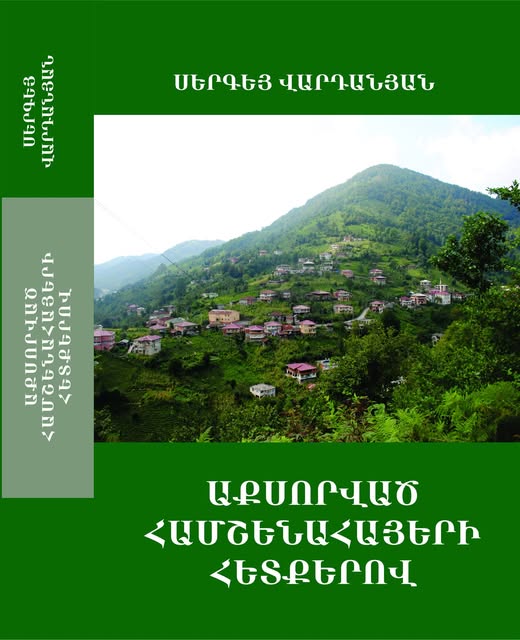
By: Sergey Vardanyan
Yerevan, Lusakn, 2025, 432 p.
The book is about Islamized Hamshen Armenians who, along with people of other ethnicities, were exiled in 1944 from the border villages of Adjara to Kazakhstan and Kyrgyzstan. For many years, nothing was published about this in the press or academic literature. It was only 40 years later, in 1984, that Sergey Vardanyan managed to find them in Central Asia, uncover the unknown pages of the past of the Islamized Hamshen Armenians, and document unique ethnographic, folkloric, and dialectological materials.
ARMENIANS IN TURKEY AFTER THE SECOND WORLD WAR. AN ARCHIVAL READER OF USSR CONSULAR DOCUMENTS
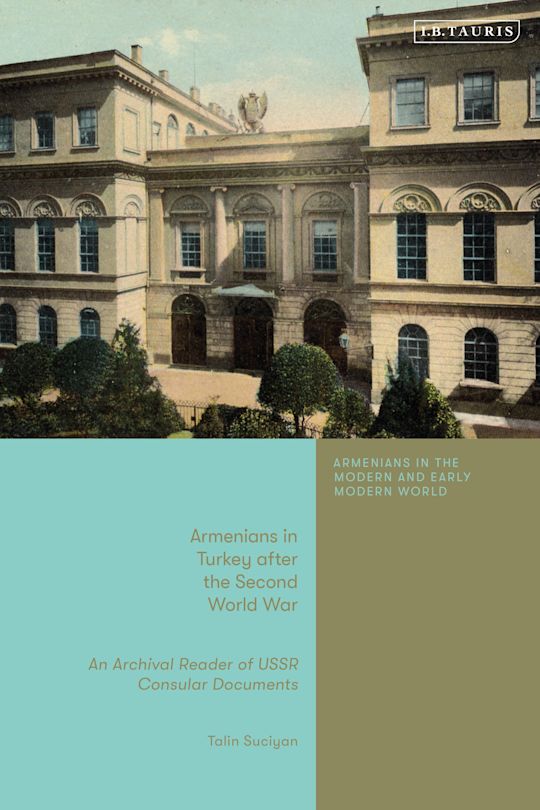
By: Talin Suciyan
I.B. Tauris, 2025, 184 p.
This reader brings to light newly discovered archival material compiled by the Soviet Consulate in İstanbul. The book reveals the lives and experience of Armenians in Turkey in the 1940s, with a particular focus on the process of emigration to Soviet Armenia. The accounts, translated for the first time into English, are comprised of Soviet officials’ reports and first-hand testimony by survivors of their lives during the post-genocide period, making this an invaluable new contribution to the existing collections of Armenian survival testimonies. Placing the archival records on emigration in the context of both life in post-genocide Turkey and the ‘repatriation’ (nergakht) project in the Armenian Diaspora, this book, which also includes the original Russian documents, will be a useful resource for researchers and students of Armenian and Turkish history.
THE PROCESS OF THE SEPARATION OF TRANSCAUCASIA FROM RUSSIA: THE EMERGENCE OF INDEPENDENT STATES (JANUARY–MAY 1918) (in Russian)
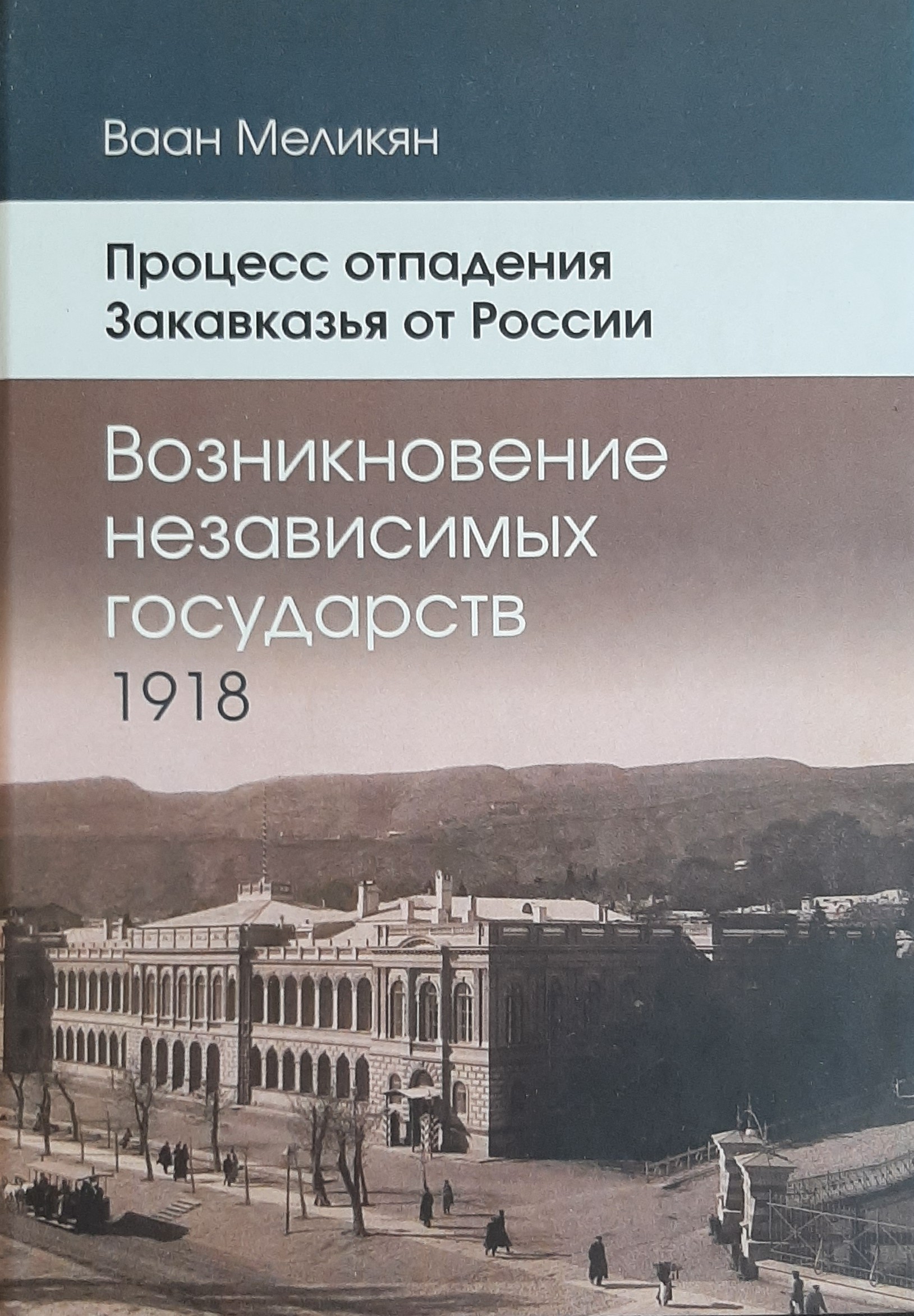
By: Vahan Melikyan Doctor of History, Professor Leading researcher of the Institute of History of NAS RA, Doctor in History, v_melikyan@mail.ru
Yerevan, Author’s Edition, 2025, 400 + 16 pages.
The monograph, based on a broad historical source base, highlights the history of the formation and activity of the Transcaucasian Seim, the proclamation of the Transcaucasian Independent Republic, and the process of separation of Transcaucasia from Russia, as well as the formation of the independent republics of Georgia, Azerbaijan, and Armenia.
The book is intended for historians, political scientists, international relations experts, diplomats, politicians, educators, students, and a wide range of readers.
THE AGONY OF A PEOPLE Haig Toroyan’s Eyewitness Account of the Armenian Genocide
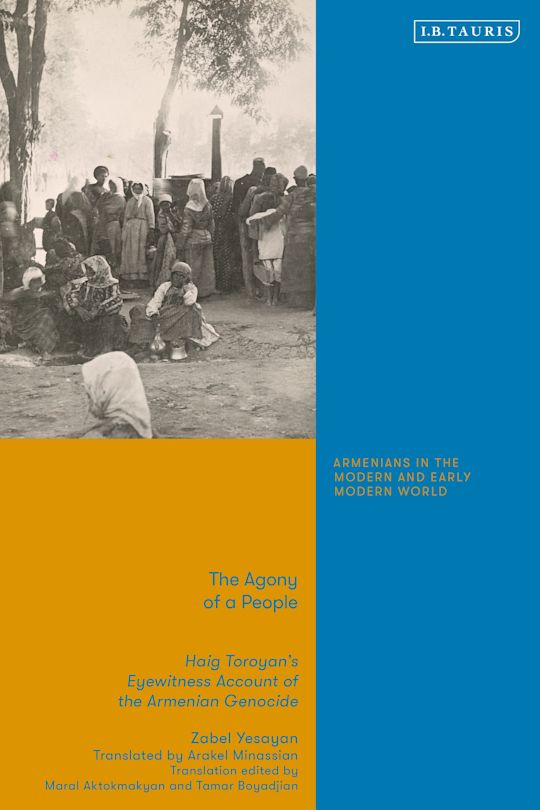
By: Zabel Yesayan
I.B. Tauris/Bloomsbury, 2025, 200 p. 2 bw ill.
Haig Toroyan’s account of his journey from Dikranagerd (Diyarbakır in modern-day southeastern Turkey) along the Euphrates River to Mesopotamia and Iran is a unique and hauntingly detailed account of the Armenian Genocide of 1915. Recounting first the ominous final months of 1914, Toroyan is employed in Jarabalus by a sympathetic German Army Sergeant, Otto Oehlmann, as his assistant and interpreter, on a mission to transport arms to Iran. Posing as a Syrian Catholic Arab, Toroyan keeps notes on the atrocities he sees being committed against his own people but knows he cannot reveal his true ethnicity. He records the stories of the refugees he meets, as well as the conversations he can have with Turkish soldiers, unaware they are speaking with an Armenian. In the summer of 1916, Haig Toroyan told his story to celebrated Armenian writer Zabel Yessayan, who had herself escaped from the round-up of intellectuals in İstanbul in April 1915. Yessayan published his testimony in 1917 in Western Armenian. With this translation, Haig Toroyan’s testimony, the first full-length eyewitness account of the Armenian Genocide ever published in Armenian in the wake of 1915, is available in English for the first time.


